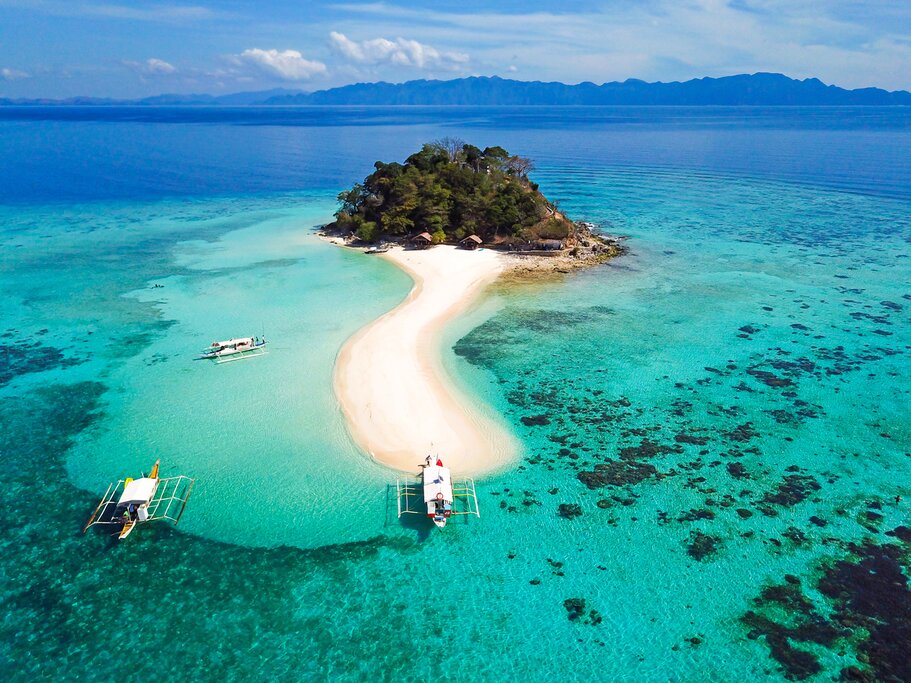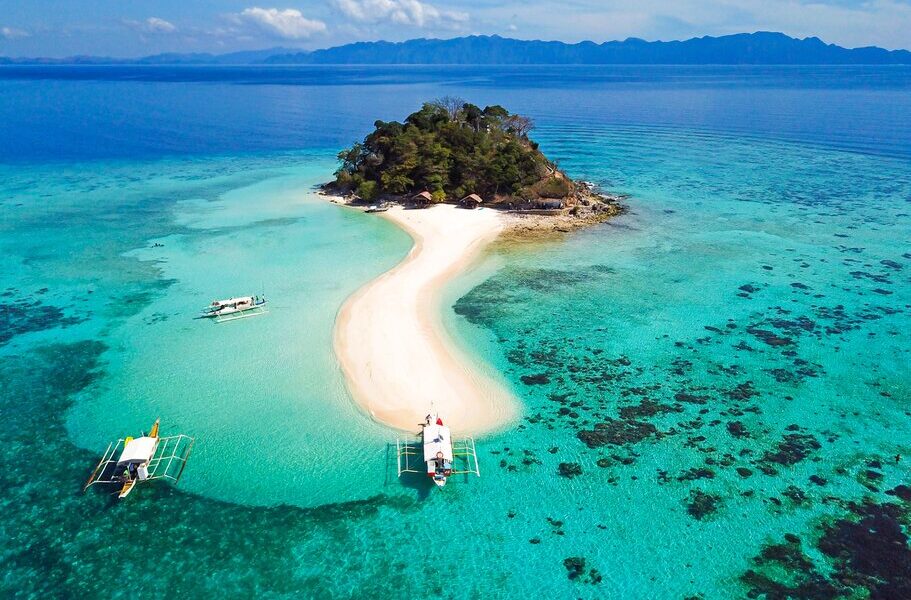
January is one of the best months to travel to the Philippines: the weather is warm but not too hot and humid, there’s little rain, and everything is open and accessible. Crowds and costs will be higher, though, especially around New Year. Whether you want to party with the locals during one of the country’s famous festivals, try a new water sport, or relax on a beach in the sun, January is a great time to do so. Read on to find out more about traveling to the Philippines in January.
Weather in the Philippines in January
The Philippines, a captivating archipelago nestled in Southeast Asia, boasts a tropical climate characterized by two primary seasons: the wet season, also known as the monsoon season, and the dry season. While temperatures generally run hotter during the wet season and experience a cooling trend during the dry season, it is crucial to acknowledge that monthly and regional variations exist. January falls squarely in the middle of the dry season in the Philippines. During this time, travelers can anticipate temperatures generally hovering between a pleasant 75°F and a balmy 88°F (equivalent to 23°C and 31°C) in the majority of the country. Furthermore, humidity levels tend to be relatively low in January, creating a more comfortable environment for exploration and outdoor activities.
While the probability of typhoons impacting the Philippines in January remains relatively low, it is not entirely negligible. Typhoons typically occur later in the year, specifically after August and before January. It is essential to understand that these weather events have the potential to be incredibly destructive. Therefore, it is highly recommended to diligently monitor weather reports and take necessary precautions to avoid areas that may be at risk of being affected by a typhoon. Additionally, travelers should be prepared to adjust their travel plans accordingly should a typhoon threaten their intended destination. It’s always better to be safe than sorry, and a little preparation can go a long way in ensuring a smooth and enjoyable trip.
Crowds and Costs of Traveling the Philippines in January
January represents the peak travel season within the Philippines. This surge in tourism can be attributed to the confluence of ideal weather conditions and the presence of New Year vacations earlier in the month. Consequently, popular beach resort areas tend to experience significant crowding. Despite this increased demand, the Philippines generally remains a good-value destination. The cost of high-quality accommodation is generally lower compared to other popular tourist locations. Nevertheless, it is important to acknowledge that January is undeniably a more expensive time of year to embark on a trip to the Philippines. Resorts typically increase their prices due to the high demand, and availability can become limited. To mitigate the impact of these factors, it is strongly advised to make bookings well in advance if you intend to visit the Philippines in January. This is particularly important for the first week of the month, when prices can potentially surge to as much as four times higher than during the low season. Planning ahead will allow you to secure your preferred accommodations and activities at more reasonable rates, ensuring a more enjoyable and budget-friendly travel experience.
Where to Go in the Philippines in January
During January, the Philippines presents itself as a virtually unrestricted landscape of accessible and highly desirable destinations. The pristine beaches of the Philippines beckon to many travelers, and with an impressive collection of approximately 2,000 inhabited islands to choose from, visitors are guaranteed to be spoiled for choice. El Nido and Coron, idyllic destinations situated in the western region of Palawan, are notably popular due to their accessibility and tranquil atmosphere. A mere short flight from Manila transports visitors to these serene havens, creating an impression of distance from the bustling mainland. Coron serves as an exceptional base for embarking on captivating diving adventures, particularly for those interested in exploring World War II-era Japanese shipwrecks that lie just offshore. Meanwhile, El Nido allures visitors with its postcard-perfect white-sand beaches and the dramatic karst islands and rock formations that define its unique beauty. These destinations offer an enchanting escape for travelers seeking to immerse themselves in the natural wonders of the Philippines.
For travelers yearning for a more unconventional island experience, Camiguin Island beckons, accessible via a short ferry ride from the northern coast of Mindanao Island. The southern island, Mindanao Island, sees fewer international travelers, a consequence largely attributable to its unfavorable reputation for safety. It is important to note that the riskiest regions of the island are concentrated in the west and south. The area surrounding the northern city of Cagayan de Oro, however, is known for its relative peace and tranquility. Camiguin Island itself is a volcanic paradise, offering a collection of laid-back resorts, exceptional snorkeling opportunities, and an abundance of fresh seafood delicacies. These culinary treasures are often served in generous platters and savored by hand, a delightful contrast to the pork-centric cuisine prevalent in other parts of the country. Exploring Camiguin Island promises an authentic and off-the-beaten-path experience, revealing a different facet of the Philippines’ rich cultural and natural heritage.
What to Do in the Philippines in January
Beyond the simple pleasure of lounging on a beautiful beach, January presents an exceptional opportunity for diving enthusiasts. The dry season’s characteristic lack of rainfall translates to generally favorable water visibility, enhancing the underwater experience. Located in the heart of the Indo-Pacific Oceans’ renowned “Coral Triangle,” the Philippines consistently ranks among the world’s premier diving destinations. Divers can anticipate encountering a mesmerizing array of marine life, including vibrant coral reefs and gardens, graceful manta rays, majestic whale sharks, schools of diverse tropical fish, impressive giant clams, and intriguing wrecks that await exploration. For those who prefer not to scuba dive, snorkeling offers a similarly rewarding experience, allowing you to witness the underwater wonders in a more accessible way.
For active travelers who prefer to explore the land, January offers an ideal window to embark on hiking adventures in the Philippines. The relatively cool and dry weather conditions create a comfortable environment for trekking. The rice terraces of Banaue in northern Luzon are a premier hiking destination in the Philippines. Besides taking in the breathtaking vistas of the UNESCO-listed Batad Rice Terraces and Bangaan Rice Terraces, hikers have the opportunity to engage with the local Ifugao people, gaining insights into their unique culture and way of life. These terraces are living testaments to generations of sustainable farming practices. Engaging with the local community and understanding their deep connection to the land makes for a richer and more meaningful experience.
To harmonize beach relaxation and exhilarating hiking activities, seek out destinations that seamlessly blend the best of both worlds. Fortunately, the Philippines boasts a plethora of locations where stunning beaches are within easy reach of captivating hiking trails. Bohol Island stands out as one such destination, celebrated for both its pristine shores and its diverse hiking opportunities. Embark on a short day hike to conquer the jagged peaks of Osmeña Peak, offering panoramic views of the surrounding landscape. Or, venture to the famed Chocolate Hills, appropriately named for the distinctive hue they adopt during the dry season. Bohol Island epitomizes the versatility of the Philippines, offering a diverse range of experiences to cater to every traveler’s preferences.
Events in the Philippines in January
New Year’s Day, celebrated nationwide on January 1st, holds significant cultural importance in the Philippines. As a designated public holiday, most offices, schools, and businesses will be closed on this day. When scheduling activities, it is important to factor in these closures. New Year’s Day is a time for families to gather, share meals, and participate in traditional celebrations, showcasing the strong sense of community that permeates Filipino culture.
The Feast of the Black Nazarene, held annually in Manila on January 9th, represents a profound expression of Catholic faith and devotion. This religious festival centers around a life-sized statue of Christ carrying his cross, which is paraded from the 16th-century Quiapo Church through the streets of Manila. At other times of the year, visitors to the church can admire the evocative statue on display, appreciating its historical and spiritual significance. The Feast of the Black Nazarene is a powerful display of faith and an opportunity to witness a unique cultural tradition.
Ati-Atihan, which takes place in Kalibo, Panay Island, is one of the biggest festivals in the Philippines. This vibrant and energetic event celebrates the relationship between the indigenous people and settlers. The festival features vibrant costumes, energetic street dancing, and a joyful spirit of community. It takes place during the second week of January, adding another layer of cultural richness to the month.
Sinulog, Cebu City‘s largest and most spectacular festival, unfolds annually on the third Sunday of January. This grand celebration revolves around Santo Niño (the child Christ) and features a mesmerizing street parade, captivating music and dancing performances, and an abundance of feasting opportunities. Sinulog is a vibrant celebration of faith and culture, drawing participants and spectators from all corners of the country.
Lunar New Year, a significant cultural event celebrated particularly in Manila, typically occurs in late January or early February. Even many Filipinos (particularly in Manila) who aren’t of Chinese descent join in celebrating this festival with dragon dances and lively street parties. Manila’s Chinatown, widely regarded as the oldest Chinatown in the world, serves as a prime location to experience the Lunar New Year celebrations. The vibrant atmosphere and cultural traditions create an immersive experience for visitors and locals alike.
B-2148

